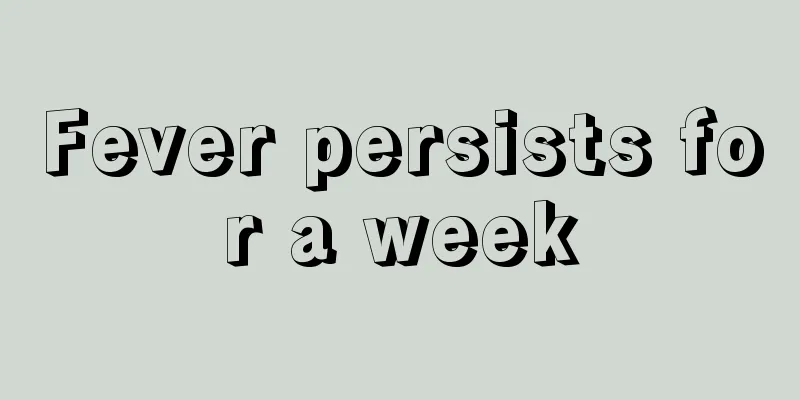Manifestations and treatment methods of infusion allergic reaction

|
Normally, when you have a cold or some inflammation in the body, most people use intravenous infusion to relieve the patient's pain. However, only these minor illnesses can be treated with intravenous infusion. Most diseases can be treated through experiments, but not everyone is suitable for intravenous infusion treatment, such as people who are allergic to infusion. Let's take a look at the manifestations and treatment methods of infusion allergic reactions. 1. Fever reaction: It is often caused by the infusion of pyrogenic substances (pyrogen, dead bacteria, free bacterial protein, other protein and non-protein organic or inorganic substances). The mechanism is that some factors during the infusion process directly or reflexly cause systemic capillary spasm, leading to microcirculation disorders and a series of symptoms. 2. Acute pulmonary edema is caused by excessively rapid infusion. The mechanism is that the pulmonary venous pressure increases rapidly, and the pulmonary capillary pressure increases accordingly, causing the fluid in the blood vessels to infiltrate into the pulmonary interstitium and alveoli to form acute pulmonary edema. Treatment of infusion reactions and drug allergic reactions: If an infusion reaction or drug allergy occurs, stop the infusion immediately, replace the infusion set and fluid (keep for future reference), and be prepared for emergency treatment. However, the needle cannot be removed because reinsertion of the vein may be difficult, leading to a delay in emergency treatment. Suggestions: For fever and serum-like reactions, immediately give dexamethasone 0.3-0.5 mg/kg intravenously and promethazine 0.5-1 mg/kg intramuscularly, and at the same time give warming, oxygen inhalation, physical cooling or antipyretic drugs such as acetaminophen. If the patient has symptoms of anaphylactic shock such as chills, high fever, cyanosis of the lips, profuse sweating, cold limbs, and difficulty breathing, immediately inject epinephrine 0.01-0.03 mg/kg intramuscularly and repeat the medication every 15-30 minutes. At the same time, give an intravenous drip of hydrocortisone 5mg/kg, up to 3 to 4 times within 24 hours, etc. Avoid spicy and greasy food, drink plenty of water, quit smoking and drinking, and pay attention to rest. It is recommended to stop using amoxicillin and clavulanic acid and use other antibiotics. Anti-allergic drugs can be used, such as cetirizine, vitamin C tablets, and calcium tablets. Because in order to get rid of the disease faster, in addition to medication or surgical treatment, most patients also need intravenous infusion to achieve better treatment results and recover health faster. However, some people will have allergic reactions during the infusion process. The manifestations and treatment methods of allergic reactions have been introduced above. I hope it can help people with allergies. |
<<: Methods for treating phlebitis caused by infusion
>>: Introduction to drug factors and causes of common infusion reactions
Recommend
Is it better to use a pillow or not?
For people, a lifetime of several decades is only...
What is goose palm wind? Ten Chinese medicine conditioning recommendations
Goose foot wind is a disease that occurs on the h...
What are the early symptoms of brain fibroma
Brain fibroma can be examined through MRI or brai...
What are the nursing measures for glioma
Glioma is one of the most common intracranial mal...
How to remove stones in the lower calyx of the kidney
There are about seven or eight funnel-shaped tiss...
How much does targeted treatment for lung cancer cost per month? How effective is targeted treatment for lung cancer?
Lung cancer is currently a relatively common mali...
Why do you need to drink water when doing CT
CT is a very common examination in life. It is us...
What's the matter with the raised bumps on the eyeballs
Everyone knows how important eyes are to us, but ...
Can I exercise during colon cancer?
Can you exercise during colon cancer surgery? Rel...
The difference between Liubao tea and Pu'er tea
Most people are more familiar with Liubao tea and...
Brain nerve disorder, you must know these
The human brain nerves are related to the healthy...
My toes are swollen and hurt when I touch them. What's going on?
Toes are also part of the human body. Many people...
Can fire needles treat hemangiomas?
Fire needle treatment for hemangioma is a method ...
Do I need to be on an empty stomach to get a health certificate?
There are many positions in society that require ...
Baked purple sweet potato calories
Different cooking methods will give the same ingr...









